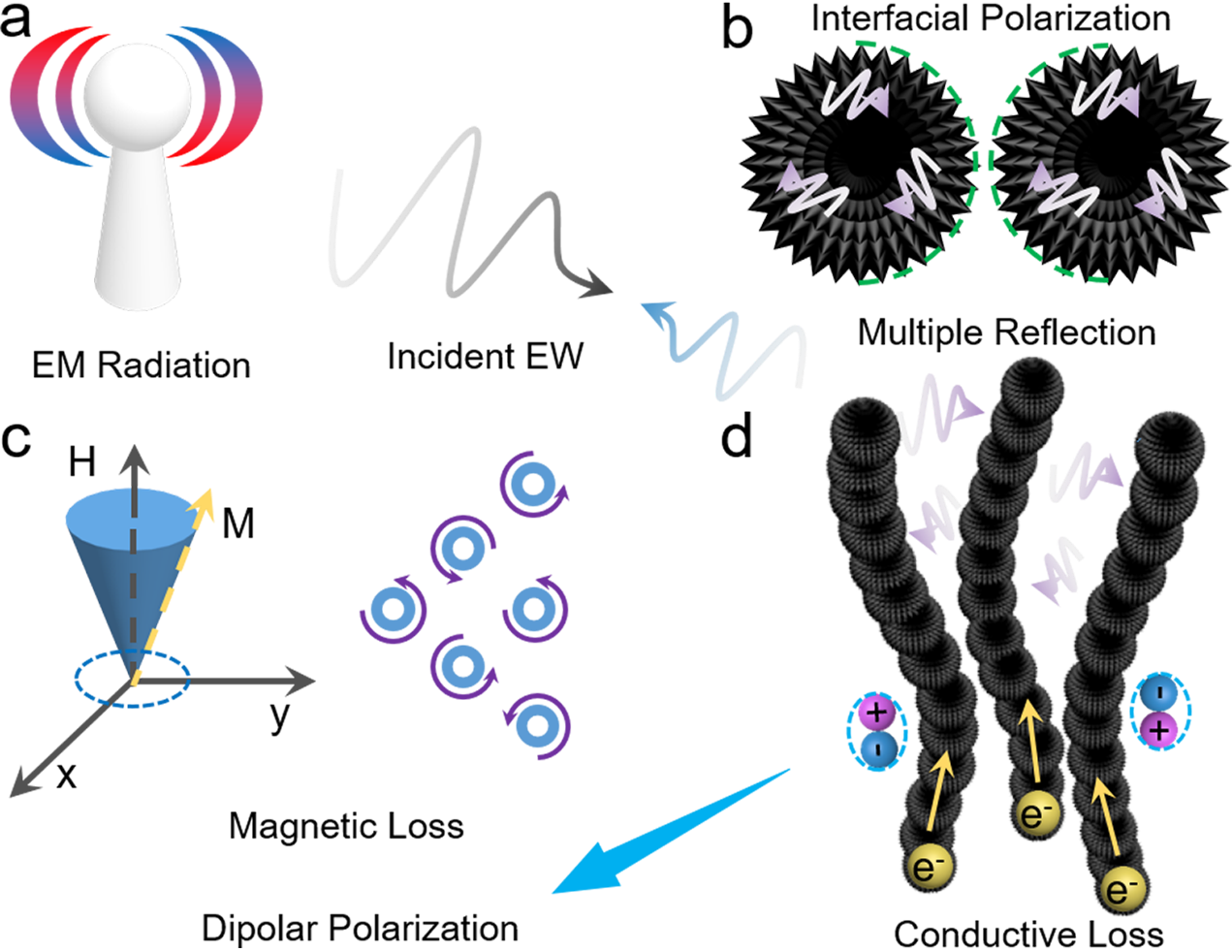
In a study published in Advanced Materials Interfaces, a research team led by Prof. WANG Hui and associate Prof. SHENG zhigao from the Hefei Institutes of Physical Science (HFIPS) of the Chinese Academy of Sciences reported the synthesis of polyvinylpyrrolidone-directed nickel nanowires (PNNWs) by solvothermal method assisted by high magnetic field, and applied them to enhance microwave absorption.
Among many microwave absorbers that have been studied, one-dimensional magnetic nanowires have attracted much attention because of their excellent mechanical properties, large aspect ratio and excellent electronic transmission performance. However, the smooth surface and insufficient magnetism of nickel nanowires synthesized by traditional methods inhibit the process of electromagnetic wave (EW) passing through the absorber and dissipating as heat energy. Therefore, it is urgent to find a new method to increase the surface roughness and magnetic properties of nickel nanowires and to enhance their microwave absorption performance.
In this study, the researchers used solvothermal method induced by external magnetic field to synthesize PNNWs, and the morphology and properties of PNNWs showed a magnetic field strength-dependent relationship.
9T-PNNW synthesized in 9 T (tesla) magnetic field has higher aspect ratio, larger specific surface area and better magnetic properties, which endows it with excellent microwave absorption performance. When the thickness is 4.5 mm, the minimum reflection loss (29.82 dB) is reached at 4.08 GHz. When the thickness is 1.5 mm, the effective absorption bandwidth from 14.4 GHz to 18.0 GHz can exceed 3.6 GHz.
This material induces a variety of electromagnetic loss mechanisms to attenuate electromagnetic waves, among which dielectric loss is dominant, while magnetic loss, current loss and resonance effect only play an auxiliary role, according to the researchers.
This work opens up a new way for the rational design and preparation of nickel nanowires, and more importantly, the magnetic field has reference significance for the regulation of absorbent performance.
The study was supported by the National Key R&D Program of China, the National Natural Science Foundation of China, the Hefei Institutes of Physical Science Director's Fund, etc.

Schematic illustration of EW attenuation mechanisms of 9T-PNNW samples. a. EW incidence; b. interfacial polarization; c. magnetic loss; d. conductive loss, and dipolar polarization. (Image by HFIPS)

86-10-68597521 (day)
86-10-68597289 (night)

52 Sanlihe Rd., Xicheng District,
Beijing, China (100864)

